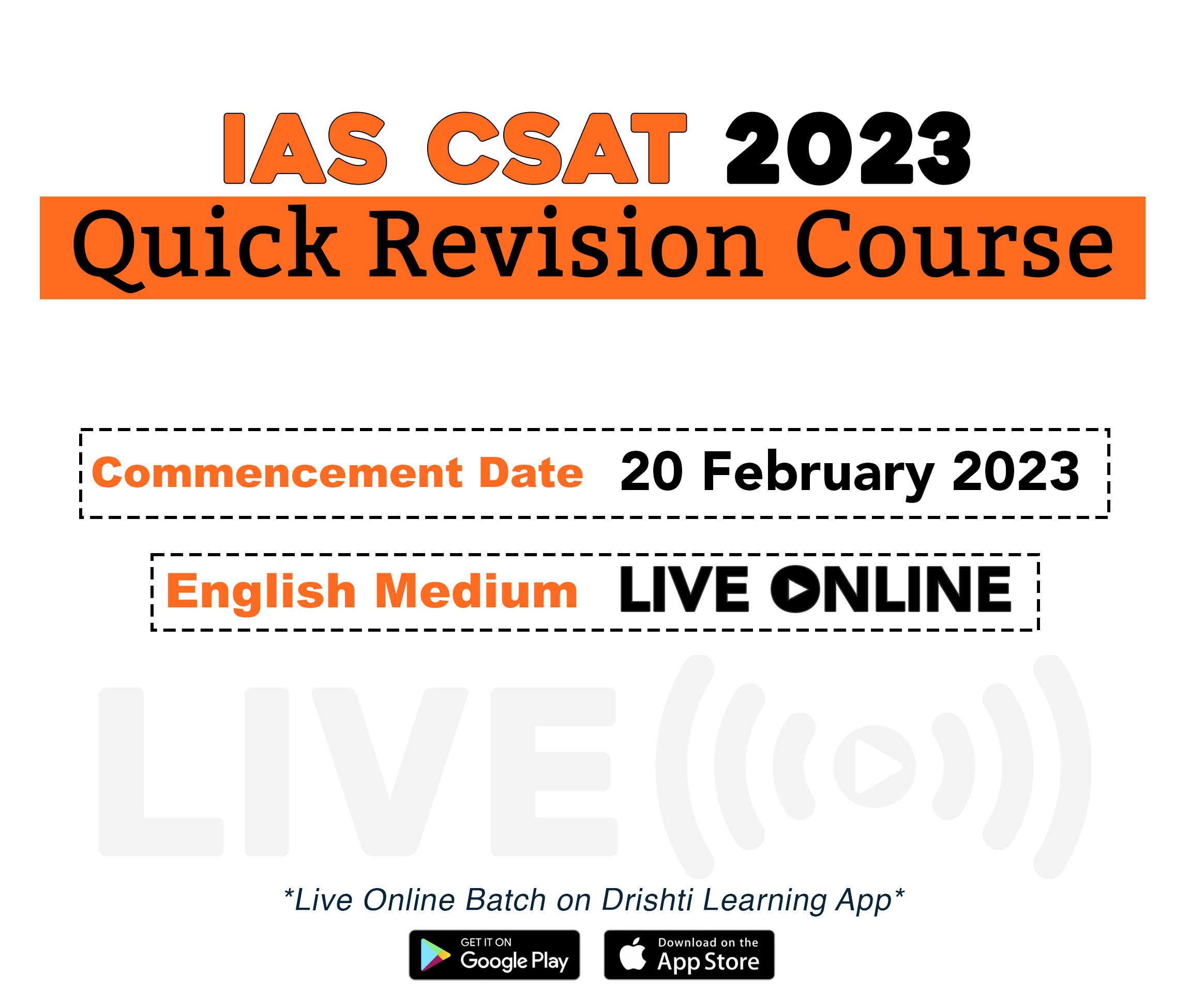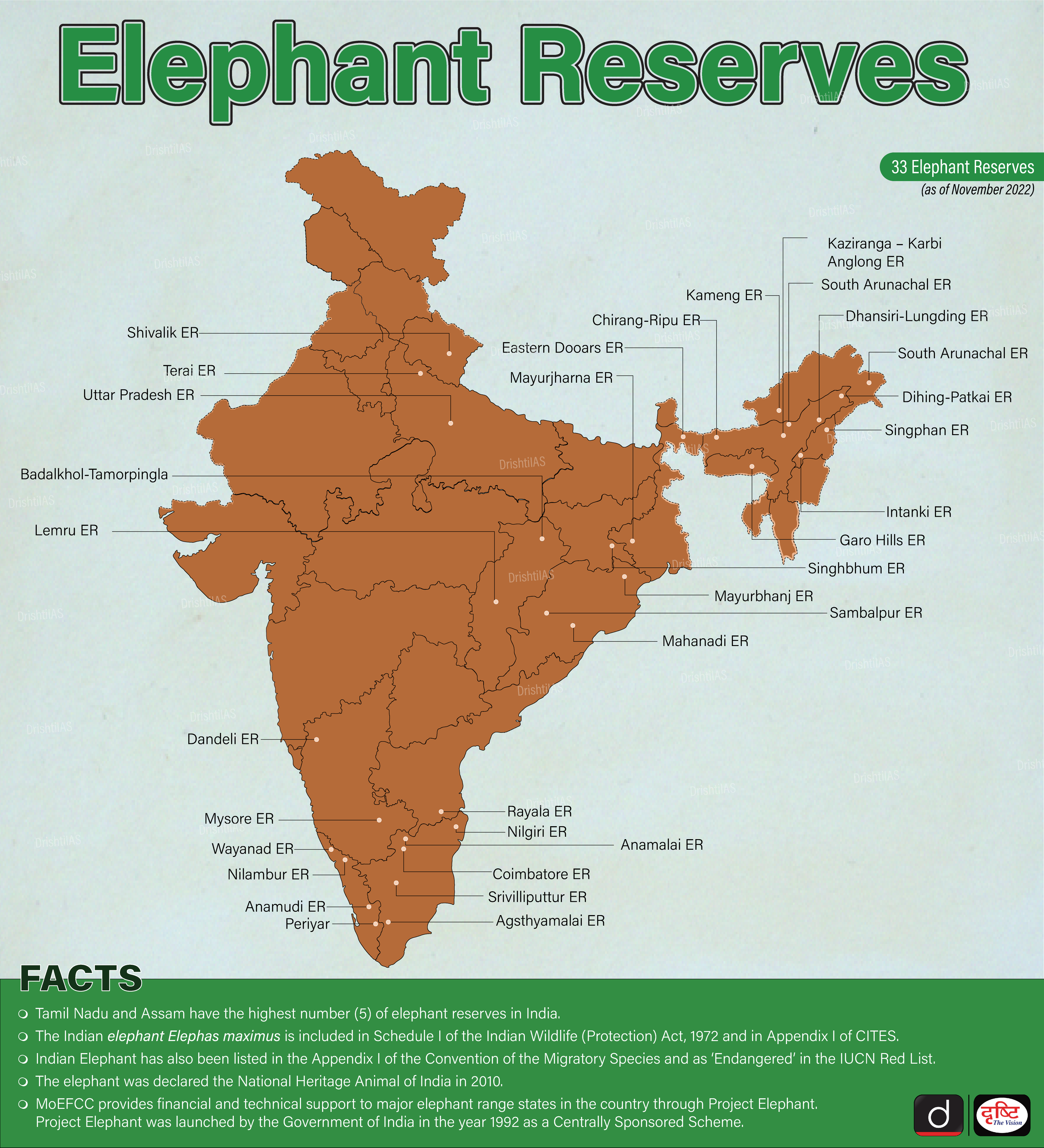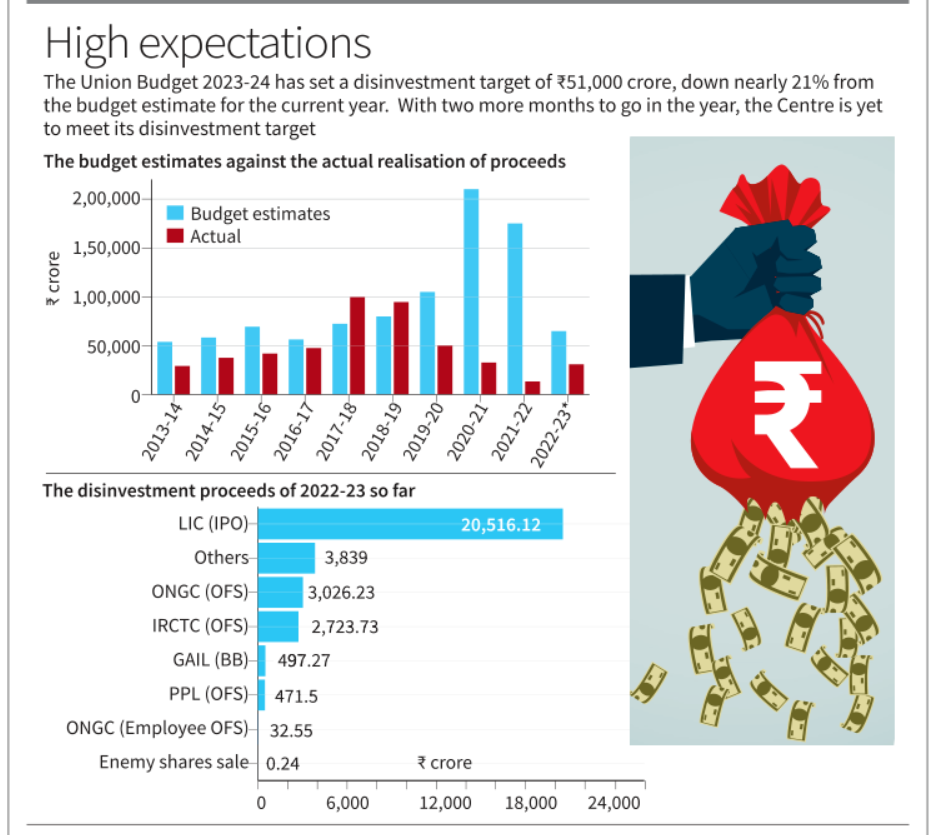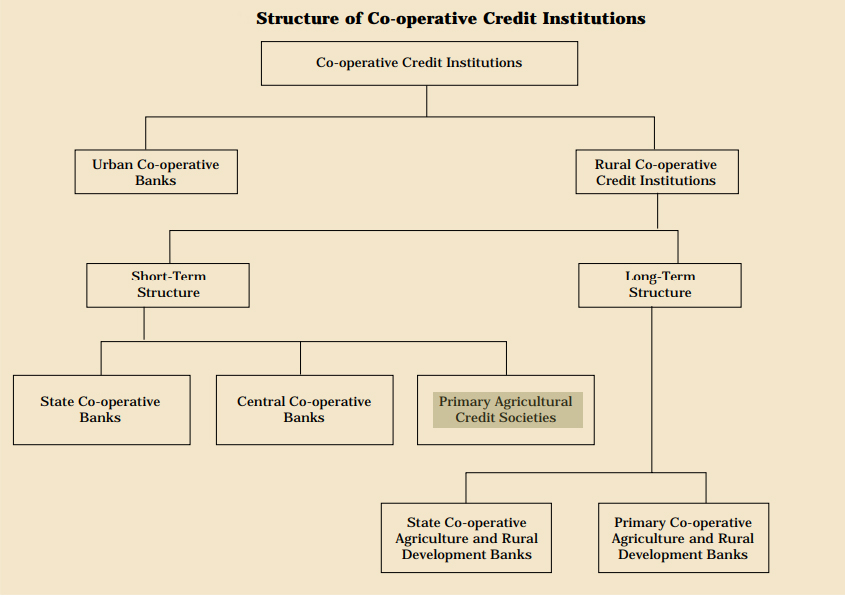Maps
Indian Economy
Status and Proceeds of Disinvestment
Prelims: Disinvestment, DIPAM, CPSE, IPO,
Mains: Status and Proceeds of Disinvestment.
Why in News?
In the Union Budget 2023-24, the government has set a disinvestment target of Rs 51,000 crore, down nearly 21% from the budget estimate for the current year and just Rs 1,000 crore more than the revised estimate. It is also the lowest target in seven years.
What is Disinvestment?
- About:
- The disinvestment process involves the sale of government stake in public sector enterprises to strategic or financial buyers, either through the sale of shares on stock exchanges or through the sale of shares directly to buyers.
- The proceeds from the disinvestment are used to finance various social and infrastructure projects and to reduce the government's fiscal deficit.
- Approaches:
- Minority Disinvestment: The government retains a majority in the company, typically greater than 51%, thus ensuring management control.
- Majority Divestment: The government hands over control to the acquiring entity but retains some stake.
- Complete Privatisation: 100% control of the company is passed on to the buyer.
- Process:
- In India, the disinvestment process is conducted by the Department of Investment and Public Asset Management (DIPAM), which comes under the Ministry of Finance.
- The primary objective of DIPAM is to manage the government's investments in public sector enterprises and to oversee the disinvestment of government equity in these enterprises.
- Government had constituted the National Investment Fund (NIF) in 2005 into which the proceeds from disinvestment of Central Public Sector Enterprises were to be channelized.
What is the Need For Disinvestment?
- Reduce the Fiscal Burden: The government may disinvest in order to reduce the fiscal burden or bridge the revenue shortfall for that year.
- It also uses disinvestment proceeds to finance the fiscal deficit, to invest in the economy and development or social sector programmes, and to retire government debt.
- Encourages Private Player: Disinvestment also encourages private ownership of assets and trading in the open market.
- Encourage private sector investment in the economy, as it signals the government's commitment to reforms and to creating a more conducive business environment.
- If successful, it also means that the government does not have to fund the losses of a loss-making unit anymore.
- Improves Efficiency: By divesting from public sector enterprises, the government can improve the efficiency and competitiveness of these enterprises, as private sector ownership and management can bring in new ideas and a more market-oriented approach.
- Better Allocation of Resources: The government can reallocate the resources freed up through disinvestment towards other priorities, such as social and infrastructure development.
- Increases Transparency: Disinvestment can bring in greater transparency and accountability in the functioning of public sector enterprises, as private sector ownership and management can lead to more stringent financial and operational reporting.
How has Disinvestment Fared in Recent Years?
- Since 2014, the government has met (and overachieved) its disinvestment targets twice.
- In 2017-18, the government earned disinvestment receipts of a little over ₹1 lakh crore as against a target of ₹72,500 crore, and in 2018-19, it brought in ₹94,700 crore when the target was set at ₹80,000 crore.
- The Government has not met the disinvestment target for 2022-23 so far, having realised Rs 31,106 crore to date, of which, Rs 20,516 crore or close to a third of the budgeted estimate came from the IPO (Initial Public Offering) of 3.5% of its shares in the Life Insurance Corporation (LIC).
What is the Disinvestment Plan in 2023-24?
- The Centre is not going to add new companies to the list of CPSEs to be divested in 2023-24.
- The government has decided to stick to the already-announced and planned privatisation of State-owned companies.
- These include IDBI Bank, the Shipping Corporation of India (SCI), the Container Corporation of India Ltd (Concor), NMDC Steel Ltd, BEML, HLL Lifecare, and so on.
- Incidentally, the disinvestments of Bharat Petroleum Corporation Limited, SCI, and ConCor had been approved by the government in 2019 but have not gone through yet.
What are the Challenges of Disinvestment in India?
- Political Opposition: Disinvestment is a politically sensitive issue in India, and the process has often been opposed by political parties and trade unions who are opposed to the sale of public sector enterprises.
- Valuation Issues: The valuation of public sector enterprises can be a challenge, as these enterprises may not be able to compete effectively in the market due to their bureaucratic and non-market-oriented structures.
- Labor Issues: Disinvestment can also lead to labor-related issues, as workers in public sector enterprises may fear job losses or wage cuts following the sale of these enterprises.
- Lack of Interest from Buyers: In some cases, the government may struggle to find buyers for its stakes in public sector enterprises, especially if these enterprises are not performing well financially.
- Regulatory Challenges: The process of disinvestment is subject to a range of regulations and approval processes, which can slow down the process and add to its complexity.
- Legal Challenges: The process of disinvestment can also be challenged in the courts, as litigants may challenge the validity of the sale or the terms and conditions under which it was conducted.
Way Forward
- Overall, disinvestment is seen as an important tool for promoting economic growth and development in India. The government in India has continued to pursue its disinvestment program, with the objective of generating revenue, improving the efficiency of public sector enterprises, and promoting economic growth and helping create a more dynamic and sustainable economy.
UPSC Civil Services Examination, Previous Year Question (PYQ)
Q1. In the context of governance, consider the following: (2010)
- Encouraging Foreign Direct Investment inflows
- Privatization of higher educational Institutions
- Down-sizing of bureaucracy
- Selling/offloading the shares of Public Sector Undertakings
Which of the above can be used as measures to control the fiscal deficit in India?
(a) 1, 2 and 3
(b) 2, 3 and 4
(c) 1, 2 and 4
(d) 3 and 4 only
Ans: (d)
Q2. Why is the Government of India disinvesting its equity in the Central Public Sector Enterprises (CPSEs)? (2011)
- The Government intends to use the revenue earned from the disinvestment mainly to pay back the external debt.
- The Government no longer intends to retain the management control of the CPSEs.
Which of the statements given above is/are correct?
(a) 1 only
(b) 2 only
(c) Both 1 and 2
(d) Neither 1 nor 2
Ans: (d)
Q3. With reference to the National Investment Fund to which the disinvestment proceeds are routed, consider the following statements: (2010)
- The assets in the National Investment Fund are managed by the Union Ministry of Finance.
- The National Investment Fund is to be maintained within the Consolidated Fund of India.
- Certain Asset Management Companies are appointed as the fund managers.
- A certain proportion of annual income is used for financing select social sectors.
Which of the statements given above is/are correct?
(a) 1 and 2
(b) 2 only
(c) 3 and 4
(d) 3 only
Ans: (c)


Governance
Primary Agricultural Credit Societies
Prelims: Digitization of PACS, DBT, ISS, PMFBY, Atmanirbhar Bharat.
Mains: Significance of PACS and the Issues.
Why in News?
Recently, the Union Budget 2023 has announced Rs 2,516 crore for digitization of 63,000 Primary Agricultural Credit Societies (PACS) over the next five years.
What is the Aim of Digitizing PACS?
- It aims at bringing greater transparency and accountability in their operations and enabling them to diversify their business and undertake more activities.
- It aims to help PACS become a nodal centre for providing various services such as Direct Benefit Transfer (DBT), Interest Subvention Scheme (ISS), Crop Insurance Scheme (PMFBY), and inputs like fertilizers and seeds.
What is Primary Agricultural Credit Societies?
- About:
- PACS are village level cooperative credit societies that serve as the last link in a three-tier cooperative credit structure headed by the State Cooperative Banks (SCB) at the state level.
- Credit from the SCBs is transferred to the District Central Cooperative Banks (DCCBs), that operate at the district level. The DCCBs work with PACS, which deal directly with farmers.
- PACSs provide short-term, and medium-term agricultural loans to the farmers for the various agricultural and farming activities.
- The first PACS was formed in 1904.
- PACS are village level cooperative credit societies that serve as the last link in a three-tier cooperative credit structure headed by the State Cooperative Banks (SCB) at the state level.
- Status:
- A report published by the Reserve Bank of India on December 27, 2022 put the number of PACS at 1.02 lakh. At the end of March 2021, only 47,297 of them were in profit.
What is the Significance of PACS?
- Access to Credit:
- PACS provide small farmers with access to credit, which they can use to purchase seeds, fertilizers, and other inputs for their farms. This helps them to improve their production and increase their income.
- Financial Inclusion:
- PACS help to increase financial inclusion in rural areas, where access to formal financial services is limited. They provide basic banking services, such as savings and loan accounts, to farmers who may not have access to formal banking services.
- Convenient Services:
- PACS are often located in rural areas, which makes it convenient for farmers to access their services. This is important because many farmers are unable to travel to banks in urban areas to access financial services.
- PACS have the capacity to extend credit with minimal paperwork within a short time.
- Promoting Savings Culture:
- PACS encourage farmers to save money, which can be used to improve their livelihoods and invest in their farms.
- Enhancing Credit Discipline:
- PACS promote credit discipline among farmers by requiring them to repay their loans on time. This helps to reduce the risk of default, which can be a major challenge in the rural financial sector.
What are the Issues with the PACS?
- Inadequate Coverage:
- Though geographically active PACS cover about 90% of 5.8 villages, there are parts of the country, especially in the north-east, where this coverage is very low.
- Further, the rural population covered as members is only 50% of all the rural households.
- Inadequate Resources:
- The resources of the PACS are much too inadequate in relation to the short-and medium-term credit needs of the rural economy.
- The bulk of even these inadequate funds come from higher financing agencies and not through owned funds of societies or deposit mobilization by them.
- Overdues and NPAs:
- Large over-dues have become a big problem for the PACS.
- As per the RBI report, PACS had reported lending worth Rs 1,43,044 crore and NPAs of Rs 72,550 crore. Maharashtra has 20,897 PACS of which 11,326 are in losses
- They curb the circulation of loanable funds, reduce the borrowing as well as lending power of societies, and give them the bad image of the societies of defaulting debtors are willful.
- Large over-dues have become a big problem for the PACS.
Way Forward
- These more than a century-old institutions deserve another policy push and can occupy a prominent space in the vision of Atmanirbhar Bharat as well as Vocal for Local of the Government of India, as they have the potential to be the building blocks of an Atmanirbhar village economy.
- PACS have played a crucial role in the rural financial sector and have the potential to play an even greater role in the future.
- To achieve this, PACS must be made more efficient, financially sustainable, and accessible to farmers.
- At the same time, the regulatory framework must be strengthened to ensure that PACS are effectively governed and able to serve the needs of farmers.
UPSC Civil Services Examination Previous Year Questions (PYQs)
Prelims
Q1. Consider the following statements: (2020)
- In terms of short-term credit delivery to the agriculture sector, District Central Cooperative Banks (DCCBs) deliver more credit in comparison to Scheduled Commercial Banks and Regional Rural Banks.
- One of the most important functions of DCCBs is to provide funds to the Primary Agricultural Credit Societies.
Which of the statements given above is/are correct?
(a) 1 only
(b) 2 only
(c) Both 1 and 2
(d) Neither 1 nor 2
Ans: (b)
Q2. With reference to ‘Urban Cooperative Banks’ in India, consider the following statements: (2021)
- They are supervised and regulated by local boards set up by the State Governments.
- They can issue equity shares and preference shares.
- They were brought under the purview of the Banking Regulation Act, 1949 through an Amendment in 1966.
Which of the statements given above is/are correct?
(a) 1 only
(b) 2 and 3 only
(c) 1 and 3 only
(d) 1, 2 and 3
Ans: (b)
- Co-operative banks are financial entities which belong to its members, who are at the same time the owners and the customers of their bank. They are established by State laws.
- Co-operative banks in India are registered under the Cooperative Societies Act. They are also regulated by the RBI and governed by Banking Regulations Act, 1949 and Banking Laws (Co-operative Societies) Act,1955.
- Cooperative banks lend as well as accept deposits. They are established with the aim of funding agriculture and allied activities and financing village and cottage industries.
- National Bank for Agriculture and Rural Development (NABARD) is the apex body of cooperative banks in India.
- Urban Co-operative Banks (UCB) are regulated and supervised by State Registrars of Co-operative Societies (RCS) in case of single-state co-operative banks and Central Registrar of Co-operative Societies (CRCS) in case of multi-state co-operative banks and by the RBI. Hence, statement 1 is not correct.
- The banking related functions such as issue of license to start new banks/branches, matters relating to interest rates, loan policies, investments and prudential exposure norms are regulated and supervised by the Reserve Bank under the provisions of the Banking Regulation Act, 1949 after an amendment in 1966. Hence, statement 3 is correct.
- The Reserve Bank of India came out with draft guidelines allowing primary UCBs to augment capital through issuance of equity shares, preference shares and debt instruments.
- The UCBs could raise share capital by issue of equity to persons within their area of operation enrolled as members and also through additional equity shares to the existing members. Hence, statement 2 is correct.
- Therefore, option (b) is the correct answer.
Mains
Q.“In the villages itself no form of credit organization will be suitable except the cooperative society.” – All India Rural Credit Survey. Discuss this statement in the background of agricultural fi nance in India. What constraints and challenges do financial institutions supplying agricultural fi nance face? How can technology be used to better reach and serve rural clients? (2014)


Indian Polity
Expunging in Parliament
For Prelims: Unparliamentary Words, Expunging, Article 105(2) of Constitution.
For Mains: Rules on Expunging, Procedure Related to Expunging.
Why in News?
A portion of a speech delivered by the opposition leader in the Lok Sabha on February 7th, 2023 were expunged from the records of Parliament by the Speaker's orders.
- The decision of what parts of a speech are to be expunged lies with the Presiding Officer of the House.
What are the Rules on Expunging from the Record?
- Under Article 105(2) of the Indian Constitution , Members of Parliament enjoy immunity from court proceedings for their statements in Parliament.
- However, their speeches are subject to the discipline of the Rules of Parliament, the "good sense" of its Members, and the control of proceedings by the Speaker.
- Rule 380 of the Rules of Procedure and Conduct of Business in Lok Sabha gives the Speaker the discretion to expunge any words or expressions used in debate that are considered defamatory, indecent, unparliamentary, or undignified.
What are Unparliamentary Expressions?
- The Lok Sabha Secretariat has brought out a bulky volume of ‘Unparliamentary Expressions’.
- This book contains words or expressions that would likely be considered rude or offensive in most cultures. But it also contains content that would appear to be fairly harmless and innocuous.
- The Presiding Officers - Speaker of Lok Sabha and Chairperson of Rajya Sabha have the job of keeping such words out of Parliament’s records.
How is the Decision to Expunge a Word (or portion of a speech) Taken?
- The decision to expunge a word or portion of a speech is taken by the Speaker under Rule 380, based on a recommendation from the head of the reporting section, taking into account the context in which the word or sentence was used.
- The context is key in making the decision to expunge a remark. The focus is on removing the minimum number of words.
- Rule 381 says: The portion of the proceedings of the House so expunged shall be marked by asterisks and an explanatory footnote shall be inserted in the proceedings as follows: ‘Expunged as ordered by the Chair’.
- The expunged portions cease to exist in the records of Parliament and cannot be reported by media houses, although they may have been heard during the live telecast of the proceedings.
- However, the proliferation of social media has introduced challenges in implementing expunction orders.


Science & Technology
India’s Nuclear Power Capacity
For Prelims: Nuclear Power Corporation of India Limited (NPCIL), National Thermal Power Corporation Limited (NTPC), Indian Oil Corporation Limited (IOCL), Kamini, Non-Proliferation Treaty (NPT).
For Mains: Recent Developments Related to India’s Nuclear Energy, Ways to Enhance India’s Nuclear Power Capacity.
Why in News?
India’s nuclear power capacity experienced a significant increase. By 2021-22, it had risen to 47,112 Million Units.
- In 2017, the government gave simultaneous approval for 11 indigenous pressurised heavy water reactors with a total capacity of 7,000 MegaWatts.
What is the Status of India’s Nuclear Energy?
- About:
- Nuclear energy is the fifth-largest source of electricity for India which contributes about 3% of the total electricity generation in the country.
- India has over 22 nuclear reactors in 7 power plants across the country which produces 6780 MW of nuclear power. In addition, one reactor, Kakrapar Atomic Power Project (KAPP-3) has also been connected to the grid in January- 2021.
- 18 reactors are Pressurised Heavy Water Reactors (PHWRs) and 4 are Light Water Reactors (LWRs).
- KAPP-3 is the India’s first 700 MWe unit, and the biggest indigenously developed variant of the PHWR.
- Recent Developments:
- Joint Ventures with Public Sector Undertakings (PSUs):
- Government has also allowed Joint Ventures with PSUs to enhance India's nuclear program.
- As a result, the Nuclear Power Corporation of India Limited (NPCIL) is now in two joint ventures with the National Thermal Power Corporation Limited (NTPC) and the Indian Oil Corporation Limited (IOCL).
- Expansion of Nuclear Installations:
- In the past, India's nuclear installations were mostly located in South India or in Maharashtra and Gujarat in the west.
- However, the government is now promoting its expansion to other parts of the country. As an example, the upcoming nuclear power plant in Gorakhpur town of Haryana, which will become operational in the near future.
- In the past, India's nuclear installations were mostly located in South India or in Maharashtra and Gujarat in the west.
- India’s Indigenous Move:
- The world's first thorium-based nuclear plant, "Bhavni," using Uranium-233, is being set up at Kalpakkam in Tamil Nadu.
- This plant will be entirely indigenous and will be the first of its kind. The experimental thorium plant "Kamini" already exists in Kalpakkam.
- Joint Ventures with Public Sector Undertakings (PSUs):
- Challenges:
- Limited Domestic Resources: India has limited domestic resources of uranium, which is the fuel for nuclear reactors.
- This has forced the country to import a significant portion of its uranium requirements, making the country's nuclear energy program vulnerable to global market conditions and political tensions.
- Public Opposition: The construction of nuclear power plants often faces opposition from local communities due to concerns over the safety of the reactors and the potential impact on the environment.
- Technical Challenges: The development of nuclear power plants involves complex technical challenges, including the design and construction of reactors, the management of nuclear waste, and the maintenance of nuclear safety standards.
- International Sanctions: India is not a member of the Nuclear Non-Proliferation Treaty (NPT) and has faced international sanctions in the past for its nuclear weapons program.
- This has limited its access to advanced nuclear technology and fuel supplies from other countries.
- Regulatory Barriers: The regulatory framework for the development of nuclear power in India is complex and has been criticised for being slow and bureaucratic, leading to delays in the implementation of projects.
- Limited Domestic Resources: India has limited domestic resources of uranium, which is the fuel for nuclear reactors.
How India Can Enhance its Nuclear Power Capacity?
- Overcoming Public Opposition: Addressing public concerns and increasing public awareness about the safety of nuclear power is critical to overcoming opposition to the construction of new reactors.
- This can be achieved through transparent communication and consultation with local communities, as well as the implementation of rigorous safety standards.
- Technical Innovation: To overcome the technical challenges faced by the nuclear energy sector, India needs to focus on innovation in reactor design, waste management, and safety systems.
- This could involve investment in research and development and the deployment of advanced technologies.
- Financial Sustainability: To overcome the financial challenges faced by the nuclear energy sector, India needs to find ways to make nuclear energy more cost-competitive with other forms of energy.
- This could involve reducing construction and operation costs, as well as developing innovative financing models.
- Improving International Collaboration: India needs to strengthen its international partnerships to overcome the limitations posed by international sanctions and access to advanced nuclear technology and fuel supplies.
- This could involve the development of joint ventures with other countries, the participation in international research initiatives, and the negotiation of nuclear trade agreements.
UPSC Civil Services Examination, Previous Year Questions (PYQs)
Prelims
Q. The function of heavy water in a nuclear reactor is to (2011)
(a) Slow down the speed of neutrons
(b) Increase the speed of neutrons
(c) Cool down the reactor
(d) Stop the nuclear reaction
Ans: (a)
Mains
Q. With growing energy needs should India keep on expanding its nuclear energy programme? Discuss the facts and fears associated with nuclear energy. (2018)


Governance
Digital Payments Utsav
For Prelims: Digital Payments Utsav, Digital Revolution, Digital Economy of India, MyGov, Unified Payments Interface, Digital Locker, MeghRaj, Digital India BHASHINI, Digital India.
For Mains: Digital India, Government Policies & Interventions Related to Digital Transformation.
Why in News?
Recently, the Ministry for Electronics & Information Technology launched the ‘Digital Payments Utsav’, a comprehensive campaign promoting digital payments across India along with the launch of several significant initiatives.
- The campaign will showcase India's journey of digital transformation, with a series of events and initiatives to be held from 9th February to 9th October 2023.
What are the Highlights of the Event?
- Aim:
- The focus of the campaign will be on promoting digital payments in the country, especially in the cities of Lucknow, Pune, Hyderabad, and Bengaluru, as part of the G20 Digital Economy Working Group (DEWG) event.
- Recognising the Efforts:
- 28 DigiDhan Awards were presented to top-performing banks, bankers, and fintech companies in different categories for their performance in the digital payments space.
- The awards recognize the efforts of these organizations in promoting digital payments and contributing to the growth of the digital economy.
- 28 DigiDhan Awards were presented to top-performing banks, bankers, and fintech companies in different categories for their performance in the digital payments space.
- Significance:
- The comprehensive campaign is expected to bring together various stakeholders, including the government, industry, and citizens, to drive the growth of the digital economy and promote financial inclusion.
- These initiatives will expand the reach of the Unified Payment Interface (UPI) in India and beyond. The focus is on connecting the unconnected areas of India and making UPI a global payment method.
- The National Payments Corporation of India (NPCI) has already taken steps in this direction by partnering with some countries.
What are the Other Digital Initiatives?
- Digital India Bhashini:
- Digital India BHASHINI is India’s Artificial Intelligence (AI) led language translation platform.
- A Bhashini Platform will make AI and Natural Language Processing (NLP) resources available to MSME (Medium, Small and Micro Enterprises), Startups and Individual Innovators in the public domain.
- Digital India GENESIS:
- Digital India GENESIS’ (Gen-next Support for Innovative Startups) is a national deep-tech startup platform to discover, support, grow and make successful startups in Tier-II and Tier-III cities of India.
- My Scheme:
- It is a service discovery platform facilitating access to Government Schemes.
- It aims to offer a one-stop search and discovery portal where users can find schemes that they are eligible for.
- Meri Pehchaan:
- It is National Single Sign On (NSSO) for One Citizen Login.
- It is a user authentication service in which a single set of credentials provide access to multiple online applications or services.
- Chips to Startup (C2S) Programme:
- The C2S Programme aims to train specialized manpower in the area of design of semiconductor chips at Bachelors, Masters and Research levels, and act as a catalyst for the growth of Startups involved in semiconductor design in the country.
- It offers to mentor at the organisational level and makes available State-of-the-art facilities for design to the institutions.
- Digital Locker (DigiLocker):
- It enables paperless governance by providing digital space for users for their document verification and storage.
- It will help position India as the leader of building Digital Transformation projects at population scale.
- MeghRaj:
- In order to utilise and harness the benefits of Cloud Computing, the Government has embarked upon an ambitious initiative − GI Cloud, which has been named MeghRaj.
- The focus of this initiative is to accelerate the delivery of e-services in the country, while optimising the Information and Communication Technology (ICT) spending of the Government.
- Indiastack Global:
- It is a global repository of key projects implemented under India Stack like Aadhaar, UPI, UPI123PAY, Cowin Vaccination Platform, Government e MarketPlace, DIKSHA Platform and Ayushman Bharat Digital Health Mission.
- UPI services will soon be available to Non-Resident Indians (NRIs) living in 10 countries: Australia, Canada, Hong Kong, Oman, Qatar, Saudi Arabia, Singapore, UAE, the UK, and the USA.
- National Language Translation Mission and Digital Payments have come together to make UPI 123 Pay available in the local language.
- It is a global repository of key projects implemented under India Stack like Aadhaar, UPI, UPI123PAY, Cowin Vaccination Platform, Government e MarketPlace, DIKSHA Platform and Ayushman Bharat Digital Health Mission.
What is Digital India Programme?
- About:
- It was launched in 2015.
- The programme has been enabled for several important Government schemes, such as BharatNet, Make in India, Startup India and Standup India, industrial corridors, etc.
- Vision Areas:
- Digital infrastructure as Utility to Every Citizen.
- Governance and services on demand.
- Digital empowerment of citizens.
- Objectives:
- To prepare India for a knowledge future.
- For being transformative that is to realize IT (Indian Talent) + IT (Information Technology) = IT (India Tomorrow).
- Making technology central to enabling change.
- On being an Umbrella Programme – covering many departments.
UPSC Civil Services Examination, Previous Year Question (PYQ)
Prelims
Q. Which of the following is/are the aim/aims of “Digital India” Plan of the Government of India? (2018)
- Formation of India’s own Internet companies like China did.
- Establish a policy framework to encourage overseas multinational corporations that collect Big Data to build their large data centres within our national geographical boundaries.
- Connect many of our villages to the Internet and bring Wi-Fi to many of our schools, public places and major tourist centres.
Select the correct answer using the code given below:
(a) 1 and 2 only
(b) 3 only
(c) 2 and 3 only
(d) 1, 2 and 3
Ans: (b)
Mains
Q. “The emergence of Fourth Industrial Revolution (Digital Revolution) has initiated e-Governance as an integral part of government”. Discuss. (2020)


Biodiversity & Environment
Green Steel
For Prelims: Green Steel, National Hydrogen Energy Mission (NHM), Steel Scrap Recycling Policy, PAT Scheme, CCUS Initiative, India’s Commitments at the Conference of the Parties (COP26).
For Mains: Green Steel, Significance, Challenge and the Solution.
Why in News?
Ministry of Steel seeks to reduce carbon emissions in steel industry through promotion of Green Steel.
What is Green Steel?
- About:
- Green Steel is the manufacturing of steel without the use of fossil fuels.
- This can be done by using low-carbon energy sources such as hydrogen, coal gasification, or electricity instead of the traditional carbon-intensive manufacturing route of coal-fired plants.
- It eventually lowers greenhouse gas emissions, cuts cost and improves the quality of steel.
- Low-carbon hydrogen (blue hydrogen and green hydrogen) can help reduce the steel industry’s carbon footprint.
- Green Steel is the manufacturing of steel without the use of fossil fuels.
- Ways of Production:
- Substituting the Primary Production Processes with Cleaner Alternatives:
- Carbon capture, utilization and storage (CCUS).
- Replacing conventional sources of energy with low-carbon hydrogen.
- Direct electrification through electrolysis of iron ore.
- Substituting the Primary Production Processes with Cleaner Alternatives:
- Significance:
- The steel industry is the largest industrial sector in terms of intensive energy and resource use. It is one of the biggest emitters of carbon dioxide (CO2).
- In view of commitments made at the Conference of the Parties (COP26) climate change conference, the Indian steel industry needs to reduce its emissions substantially by 2030 and hit net-zero carbon emissions by 2070.
What is the Status of Steel Production in India?
- Production: India is currently the world’s 2nd largest producer of crude steel, producing 120 Million Tonnes (MT) crude steel during financial year 2021- 2022.
- Reserves: More than 80% of the country’s reserves are in the states of Odisha, Jharkhand, West Bengal, Chhattisgarh and the northern regions of Andhra Pradesh.
- Important steel-producing centers are Bhilai (Chhattisgarh), Durgapur (West Bengal), Burnpur (West Bengal), Jamshedpur (Jharkhand), Rourkela (Odisha), Bokaro (Jharkhand).
- Consumption: India is the 2nd largest consumer of finished steel in 2021 (106.23 MT), preceded by China as the largest steel consumer as per World Steel Association.
What are the Related Government Initiatives?
- Steel Scrap Recycling Policy, 2019:
- Steel Scrap Recycling Policy, 2019 enhances the availability of domestically generated scrap to reduce the consumption of coal in steel making.
- National Green Hydrogen Mission:
- Ministry of New and Renewable Energy (MNRE) has announced National Green Hydrogen Mission for green hydrogen production and usage. The steel sector has also been made a stakeholder in the Mission.
- Motor Vehicles (Registration and Functions of Vehicles Scrapping Facility) Rules September 2021:
- It shall increase availability of scrap in the steel sector.
- National Solar Mission:
- Launched by MNRE in January 2010, it promotes the use of solar energy and also helps reduce the emission of steel industry.
- Perform, Achieve and Trade (PAT) Scheme:
- PAT Scheme incentivizes steel industry to reduce energy consumption.
- NEDO Model Projects:
- Japan’s New Energy and Industrial Technology Development Organization (NEDO) Model Projects have been implemented in steel plants for Energy Efficiency Improvement.
UPSC Civil Services Examination Previous Year Questions (PYQs)
Prelims
Q. Which of the following are some important pollutants released by steel industry in India? (2014)
- Oxides of sulphur
- Oxides of nitrogen
- Carbon monoxide
- Carbon dioxide
Select the correct answer using the code given below:
(a) 1, 3 and 4 only
(b) 2 and 3 only
(c) 1 and 4 only
(d) 1, 2, 3 and 4
Ans: (d)
Exp:
- Steel industry creates pollution as it uses coal and Iron ore whose combustion releases various Polycyclic Aromatic Hydrocarbons (PAH) compounds and oxides into the air.
- In steel furnace, coke reacts with iron ore, releasing iron and generating major environmental pollutants.
- The pollutants released from steel producing units are:
- Carbon Monoxide (CO), hence, 3 is correct.
- Carbon Dioxide (CO2), hence, 4 is correct.
- Oxides of Sulphur (SOx), hence, 1 is correct.
- Oxides of Nitrogen (NOx), hence, 2 is correct.
- PM 2.5,
- Waste Water,
- Hazardous waste,
- Solid waste.
- However, technological interventions in the form of air filters, water filters and other water saving, power saving and closed container can reduce emissions.
- Therefore, option (d) is the correct answer
Mains
Q1. Account for the present location of iron and steel industries away from the source of raw material, by giving examples. (2020)
Q2. Account for the change in the spatial pattern of the Iron and Steel industry in the world. (2014)


Social Issues
NAMASTE Scheme
Prelims: Initiatives to tackle Menace of Manual Scavenging, ULBs.
Mains: NAMASTE scheme Issues related to SC, STs
Why in News?
Union Budget 2023-2024 has allocated nearly Rs 100 crore for the National Action for Mechanized Sanitation Ecosystem (NAMASTE) and the government is looking to enable 100% mechanical desludging of septic tanks and sewers in all cities and towns.
- The process of extending the Scheme to all the Urban Local Bodies (ULBs) of the country has been initiated.
What is the NAMASTE Scheme?
- About:
- It was launched in 2022 as a Central Sector Scheme.
- The scheme is being undertaken jointly by the Ministry of Housing and Urban Affairs and the Ministry of Social Justice & Empowerment (MoSJE) and aims to eradicate unsafe sewer and septic tank cleaning practices.
- Objectives:
- Zero fatalities in sanitation work in India.
- All sanitation work is performed by skilled workers.
- No sanitation workers come in direct contact with human faecal matter.
- Sanitation workers are collectivised into Self Help Groups (SHGs) and are empowered to run sanitation enterprises.
- Strengthened supervisory and monitoring systems at National, State and Urban Local Body (ULB) levels to ensure enforcement and monitoring of safe sanitation work.
- Increased awareness among sanitation services seekers (individuals and institutions) to seek services from registered and skilled sanitation workers.
What are the Key Features of the Scheme to be Implemented in all ULBs?
- Identification: NAMASTE envisages identifying the Sewer/Septic Tank Workers (SSWs).
- Occupational Training and distribution of PPE Kits to SSWs.
- Assistance for Safety Devices to Sanitation Response Units (SRUs).
- Extending Health Insurance Scheme Benefits to identified SSWs and their families under the Ayushman Bharat- Pradhan Mantri Jan Arogya Yojana (AB-PMJAY).
- Livelihood Assistance: The Action Plan will promote mechanization and enterprise development by providing funding support and subsidy (capital +interest) to the sanitation workers, to procure sanitation related equipments.
- IEC (Information Education and Communication) Campaign: Massive campaigns would be undertaken jointly by the ULBs & NSKFDC (National Safai Karamcharis Finance & Development Corporation) to spread awareness about the interventions of NAMASTE.
What is Manual Scavenging?
- Manual scavenging is defined as “the removal of human excrement from public streets and dry latrines, cleaning septic tanks, gutters and sewers”.
- India banned the practice under the Prohibition of Employment as Manual Scavengers and their Rehabilitation Act, 2013 (PEMSR).
- The Act recognizes manual scavenging as a “dehumanizing practice.
What are the Steps taken to tackle the Menace of Manual Scavenging?
- The Prohibition of Employment as Manual Scavengers and their Rehabilitation (Amendment) Bill, 2020:
- It proposes to completely mechanise sewer cleaning, introduce ways for ‘on-site’ protection and provide compensation to manual scavengers in case of sewer deaths.
- It will be an amendment to The Prohibition of Employment as Manual Scavengers and their Rehabilitation Act, 2013.
- It is still awaiting cabinet approval.
- The Prohibition of Employment as Manual Scavengers and their Rehabilitation Act, 2013:
- Superseding the 1993 Act, the 2013 Act goes beyond prohibitions on dry latrines, and outlaws all manual excrement cleaning of insanitary latrines, open drains, or pits.
- The Building and Maintenance of Insanitary Latrines Act of 2013:
- It outlaws construction or maintenance of unsanitary toilets, and the hiring of anybody for their manual scavenging, as well as of hazardous cleaning of sewers and septic tanks.
- Prevention of Atrocities Act:
- In 1989, the Prevention of Atrocities Act became an integrated guard for sanitation workers, more than 90% people employed as manual scavengers belonged to the Scheduled Caste. This became an important landmark to free manual scavengers from designated traditional occupations.
- SC Judgment:
- In 2014, a Supreme Court order made it mandatory for the government to identify all those who died in sewage work since 1993 and provide Rs. 10 lakh each as compensation to their families.
UPSC Civil Services Examination, Previous Year Questions (PYQs)
Prelims
Q. ‘Rashtriya Garima Abhiyaan’ is a national campaign to (2016)
(a) rehabilitate the homeless and destitute persons and provide them with suitable sources of livelihood
(b) release the sex workers from their practice and provide them with alternative sources of livelihood
(c) eradicate the practice of manual scavenging and rehabilitate the manual scavengers
(d) release the bonded labourers from their bondage and rehabilitate them
Ans: (c)
Exp:
- Rashtriya Garima Abhiyaan is a national campaign for dignity and eradication of manual scavenging launched by Jan Sahas in 2001.
- Therefore, option (c) is the correct answer.
Mains
Q. What are the areas of prohibitive labour that can be sustainably managed by robots? Discuss the initiatives that can propel the research in premier research institutes for substantive and gainful innovation. (2015)


Rapid Fire
Rapid Fire Current Affairs
Moment Magnitude Scale
The recent earthquake that hit Turkey recorded a magnitude of 7.8 on the Moment Magnitude scale.
Magnitude is generally measured by Richter Scale (developed by Charles Francis Richter in 1935). It is a logarithmic scale where each step represents a 10x increase in magnitude (an earthquake measuring 7 has 10x the magnitude than an earthquake measuring 6).
However, as it is strictly valid only for certain frequency and distance ranges, a better way to measure magnitude - Moment Magnitude Scale (denoted as Mw) was developed.
The scale measures the total energy released in the earthquake and hence, provides a more accurate estimate of magnitude, especially as one goes higher up the scale. Moment Magnitude also uses more variables to calculate the energy released using seismic moment.
Other scales like the Modified Mercalli Scale (MMS) and the Rossi-Forel scale measure the intensity - the amount of shaking at a particular location. MMS ranks earthquake intensity on a scale of I (not felt) to XII (extreme).
Read More - Earthquake, Earthquake Infographics
Asphyxiation
Recently, 7 workers died due to asphyxiation during the removal of oil sludge in an edible oil tank in Andhra Pradesh. Asphyxiation is the failure or disturbance of the respiratory process brought about by the lack or insufficiency of oxygen in the brain. The unconsciousness that results sometimes leads to death. Besides lack of oxygen in the brain, Asphyxia can also be caused by injury to or obstruction of breathing passageways, as in strangulation or the aspiration of food (choking) or large quantities of fluid (near-drowning or drowning).
Section 69 (A) of IT Act
MeitY recently issued orders to block 138 online betting platforms and 94 money lending apps on an “urgent” and “emergency” basis under Section 69 (A) of the IT Act, 2000. Some of the sites and apps were allegedly linked to China and contained “material prejudicial to the sovereignty and integrity of India”.
Over the past 3 years, there have been several complaints of extortion/harassment from people who borrowed small amounts through such money-lending apps, often at exorbitantly high interest rates.
Section 69 of the IT Act allows the govt. to issue content-blocking orders to online intermediaries such as Internet Service Providers, telecom service providers, web hosting services, search engines, online marketplaces, etc. provided such a content is deemed a threat to India’s national security, sovereignty, or public order.
Read More Information Technology Act's Section 69A, Ban on Chinese Apps
Grammy Awards 2023
Grammy Award (originally named Gramophone Award) is a series of awards presented annually in the US by the National Academy of Recording Arts & Sciences (NARAS) or the Latin Academy of Recording Arts & Sciences (LARAS only for recordings in Spanish/Portuguese languages). This annual event to recognise musical achievements was started in 1959 to respect the performers for the year 1958. The honorees receive a golden statuette of a gramophone.
Indian composer (Bengaluru-based) - Ricky Kej won a Grammy for Best Immersive Audio Album for his most recent album Divine Tides with rock-legend Stewart Copeland, making him the only Indian to win three Grammy awards. Ricky has previously won 2 Grammy Awards under the Best New Age Album category - ‘Winds of Samsara’ (in 2015) and Divine Tides (in 2022).
Read More - Indian Song wins Golden Globe Award











